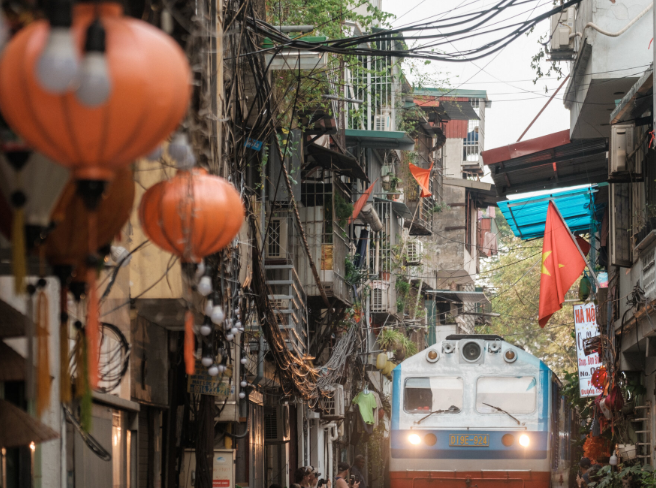Our Boundless Love for Big Sur May Be Killing It
Some 90 percent of the economy in this coastal California region relies on visitors. But overtourism, the high cost of living and most worrisome, the effects of global warming, create a future of uncertainty.
The 70 miles of California coastline that makes up the unincorporated area of Big Sur has a storied, almost mystical allure, largely thanks to its staggering beauty. With redwood forests, stunning Pacific views, winding rivers and natural hot springs, the area has for decades attracted celebrities, artists and millions of visitors. So many visitors in fact, that these days, Kirk Gafill, the president of the Big Sur Chamber of Commerce, estimates that 90 percent of the local economy is tourism-dependent.
But getting there, and living there, is increasingly difficult.
Big Sur’s main thoroughfare is Highway 1, a scenic two-lane road constructed between 1919 and 1937 as part of a statewide initiative to make the California coastline a drivable tourist attraction. In the past two years, the area has been hit by fires, heavy winter storms and landslides that cut off the community for sometimes months at a time. In March, one chunk of the road crumbled into the sea, restricting car travel to residents only for two months. Another debilitating landslide, in February, continues to cut off the southern portion of the coast: Last month, work in the area to remove debris from the road was paused indefinitely. According to the California Department of Transportation (known as Caltrans), that portion of the roadway won’t reopen until 2025, at the earliest.
ImageFog hovers above an empty, rural two-lane road that has an electric sign with the words “Highway 1 Closed.”
Big Sur’s main thoroughfare is Highway 1, but in the past two years, fires, heavy winter storms and landslides have forced road closures and cut off accessibility for months at a time.Credit…Drew Kelly for The New York Times
“It’s probably one of the challenging places to keep a road open on the coast of the lower 48,” said Jonathan Warrick, a Santa Cruz-based research geologist with the U.S. Geological Survey.
There’s no escaping the fact that the coast is crumbling into the sea. While these issues aren’t new to the area — the geological composition of Big Sur has made landslides an inevitability since Highway 1 was carved into the Santa Lucia Mountains — the frequency with which they happen, and the extremity of the closures, have led to a difficult few years. Much like other popular tourist destinations coping with the effects of climate change around the world, from Venice to Australia’s Great Barrier Reef, Big Sur is faced with the challenge of maintaining tourism, on which the community is economically reliant, while also limiting the impact of millions of visitors on the area’s fragile environment.
For locals and visitors alike, there is a pressing need to do something to preserve what’s here, to figure out a way to coexist with this awe-inspiring landscape. This is particularly challenging because of the area’s unique geography, its lack of a single governing body, plus a growing housing crisis that threatens to further shrink the full-time Big Sur population.
An overloved area?
Image
A line of cars parked on the side of a two-lane road alongside a mountain.
The beauty of Big Sur has led, on any given day, to a glut of cars on Highway 1, which can frustrate visitors and residents alike.Credit…Drew Kelly for The New York Times
“People come from around the world to drive the Highway 1, from San Francisco to L.A. or L.A. to San Francisco,” said Rob O’Keefe, president and chief executive of the See Monterey tourism agency. “And Big Sur is like our Eiffel Tower.”
The interest had led to overtourism issues even before climate change increased the number of extreme weather events and fires in the area. The exact number of annual visitors to Big Sur is hard to calculate — unlike a national park, there are no entrances being monitored — but Monterey County gets four to five million visitors per year, according to See Monterey, and many visit Big Sur specifically. In contrast, the number of permanent residents is closer to 1,500, according to the most recent U.S. census.
This often comes to a head at the Bixby Creek Bridge, a graceful arch of concrete spanning a 260-foot drop. A hot spot for visitors, famous for both its beauty and its appearance in pop culture juggernauts like the HBO series “Big Little Lies,” the bridge often sees a glut of visitors that has led to major traffic jams, illegal parking and a selfie-driven slog frustrating to visitors and residents alike. At Julia Pfeiffer Burns State Park and Soberanes Point at Garrapata State Park, too, crowds quickly overwhelm the road and the landscape.
Image
With views of the ocean in the background, a road winds past a sign with the words “Julia Pfeiffer Burns State Park.”
At Julia Pfeiffer Burns State Park, crowds can quickly overwhelm the road and the landscape.Credit…Drew Kelly for The New York Times
This has proved to be frustrating to residents, who rely on Highway 1 to commute to work, take their children to school and simply live in the area.
“By and large, Highway 1 is the only game in town,” said Kevin Drabinski, the public information officer for Caltrans District 5, which serves the Big Sur area.
Follow The New York Times
Find us on Instagram for the best of our visual journalism and beyond.
Join our WhatsApp Channel for breaking news, games, recipes and more.
Connect with us on Facebook to get the best of The Times, right in your feed.
These frustrations are further compounded by the sheer challenge of living in Big Sur these days. Many residents have been priced out — a 300-square-foot studio can cost $6,700 a month to rent — and many local workers are forced to commute from 30 to 45 miles away. The drive, of course, is further complicated by road closures and traffic.
Kate Daniels, the incoming supervisor for Monterey County’s District 5, which includes Big Sur, Carmel-by-the-Sea and Monterey, suggests that more housing for the people that work in Big Sur would help alleviate traffic issues (fewer commuters means fewer cars on the highway). It’s also essential for maintaining the character of the place.
“Our economy relies on tourism and visitation,” Ms. Daniels said. “We won’t have a viable tourism industry if the people that support that industry can no longer afford to live here.”
An uneven tourism rebound
Image
A dramatic scene of steep cliffs rolling down to a blue sea.
“These beautiful landscapes are also very active landscapes,” said Jonathan Warrick, with the U.S. Geological Survey. “They’re dynamic. And that means they can pose hazards.”Credit…Drew Kelly for The New York Times
According to data from See Monterey, tourism in the county still hasn’t fully rebounded from the pandemic: Visitor spending in Monterey County was $3 billion in 2023, versus $3.2 billion in 2019. Some of that has to do with the area’s slow recovery of international tourism (about half as much as prepandemic), for whom the Highway 1 drive is a major draw; this is continually exacerbated by road closures.
Times travel coverage. When our writers review a destination, they do not accept free or discounted services or, in most cases, reveal that they work for The Times. We want their experience to be what you can expect.
Here’s more on our standards and practices.
According to Mr. Gafill, the Chamber of Commerce president and also one of the owners of Nepenthe, a cliff-top restaurant that opened in 1949, this summer’s visitation levels were around 10 percent lower than in 2023.
Uncertainty around the road has also led to cancellations.
John Handy is the owner of the Treebones Resort, a glamping destination where accommodations include yurts, cabins and a human nest. It’s also located in the southern portion of Big Sur, which has been cut off from the community by yet another landslide in January 2023. At the height of the summer season, Treebones was about 60 percent full.

“That sounds pretty good, but normally, at this time of year, we would be 100 percent full,” Mr. Handy said in late July. “It adds up.”
While landslides and road closures are nothing new, the cadence of issues in recent years, starting with the devastating wildfire in 2016, does feel unprecedented, Mr. Gafill said.
What’s more, the increased risk of wildfires in dry years and more intense, concentrated rainfall in wet years, both products of climate change, threaten to make landslides an even more common occurrence, said Mr. Warrick, the geologist.
“These beautiful landscapes are also very active landscapes,” he said. “They’re dynamic. And that means they can pose hazards.”
What are the solutions?
Image
On the shoulder of a two-lane road, a highway-patrol officer walks from one parked car to another holding a notepad and pencil.
There is usually just one California Highway Patrol officer patrolling the 70 miles of coastline at a time.Credit…Drew Kelly for The New York Times
Efforts to maintain the area’s wild beauty are a major part of the Big Sur Land Use Plan, which came into being in 1986 and is as close to a governing document as the unincorporated area has. In addition to setting strict limits on development, the plan aims to protect what it deems the area’s “viewshed.” In brief: if you can see it from the road, it can’t be built. The L.U.P. is currently being updated for the first time since 1986, taking into account new tourism developments, like glamping, and strains on the community, including the housing shortage, issues around wildfires and the lack of capacity on Highway 1. The revised L.U.P. will be submitted to Monterey County’s planning commission this fall or winter.
“It’s so important to preserve and protect this landscape, or you will not have economic sustainability,” Ms. Daniels said.
The challenges are particularly acute because of the unique patchwork of entities that make Big Sur Big Sur — the land falls under the purview of the Forest Service, California State Parks and private landowners. Highway 1 itself is overseen by Caltrans.
Some of these entities have begun their own attempts to manage issues — or at least publish suggestions — around visitation. The Big Sur Sustainable Tourism Destination Stewardship Plan, which was spearheaded by the nonprofit Community Association of Big Sur organization and written in collaboration with Beyond Green Travel, a sustainable travel consulting firm, and a steering committee of community members, was completed in 2020. The Coastal Zone Visitor Use Management Strategy, headed by the U.S. Forest Service, was completed earlier this year.
Other steps have been taken by local officials in response to community complaints. In September, an ordinance passed by the Monterey County board of supervisors prohibits parking on Old Coast Road, which turns off at Bixby Bridge, took effect.
But Highway 1 presents a particularly unique challenge in management; there is no real way to control the flow of cars through the area.
“There seems to be a cycle where, every so often, people will suggest making Highway 1 a toll road,” said Ms. Daniels. “That’s not going to happen. It’s not compatible with state law.”
What could happen, she said, is a revival of the area’s now-defunct public transportation, which was eliminated in 2020, or the establishment of a shuttle service. But ultimately, there is no way to strictly limit the number of visitors who visit the coastline.

“It’s like Henry Miller says, ‘Everybody wants to be the last invader,’” said Magnus Toren, the director of the Henry Miller Memorial Library, a bookstore and event space tucked in the redwoods, referring to a line from Miller’s book “Big Sur and the Oranges of Hieronymus Bosch.” “We all want to pull up the drawbridge once we’re on the other side of it.”
Proposed changes come back to the issue of enforcement. For Highway 1, there is usually just one California Highway Patrol officer patrolling the 70 miles of coastline at a time. Caltrans is constantly working to maintain the highway as well as responding to landslides. And no matter what happens in the future — and it’s more or less a given that the land here will continue to move — the priority will be keeping the highway open.
“My wish is that all of the stakeholders here feel proud of being a part of this extraordinary place,” Mr. Toren said. “And that that pride expresses itself by embracing the notion that this place deserves strength, protection and restoration.”
Follow New York Times Travel on Instagram and sign up for our weekly Travel Dispatch newsletter to get expert tips on traveling smarter and inspiration for your next vacation. Dreaming up a future getaway or just armchair traveling? Check out our 52 Places to Go in 2024.


